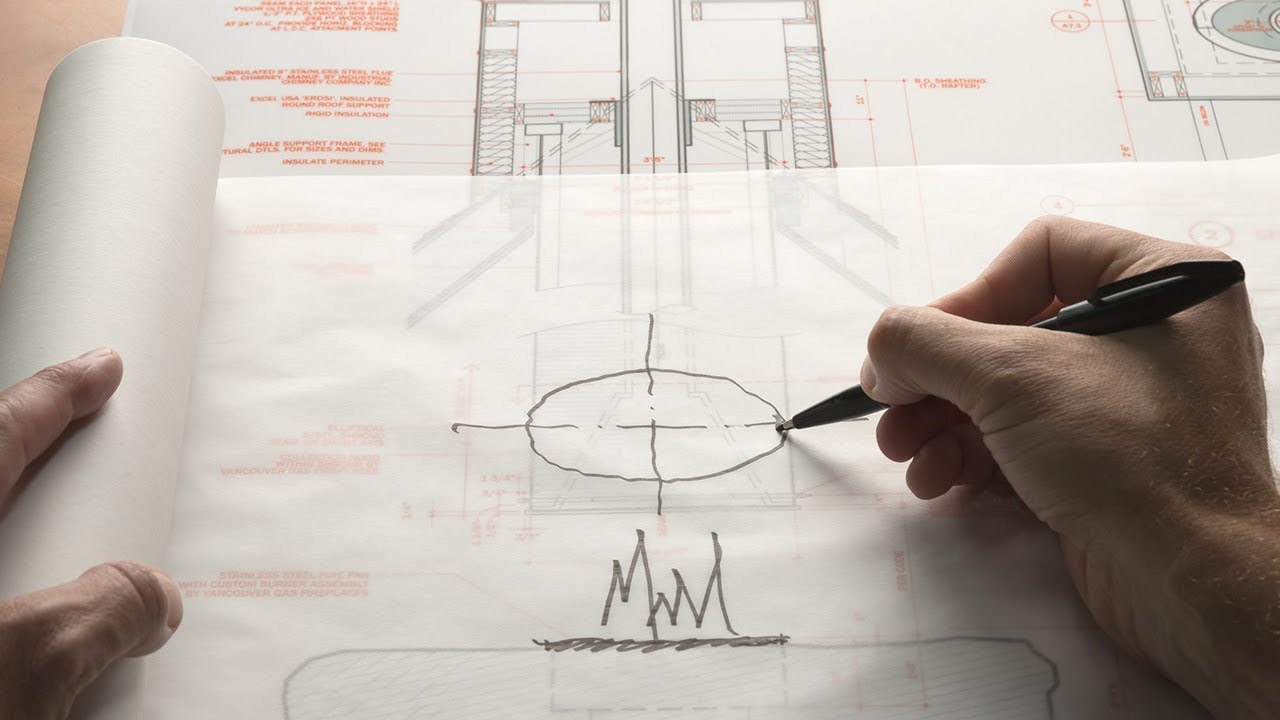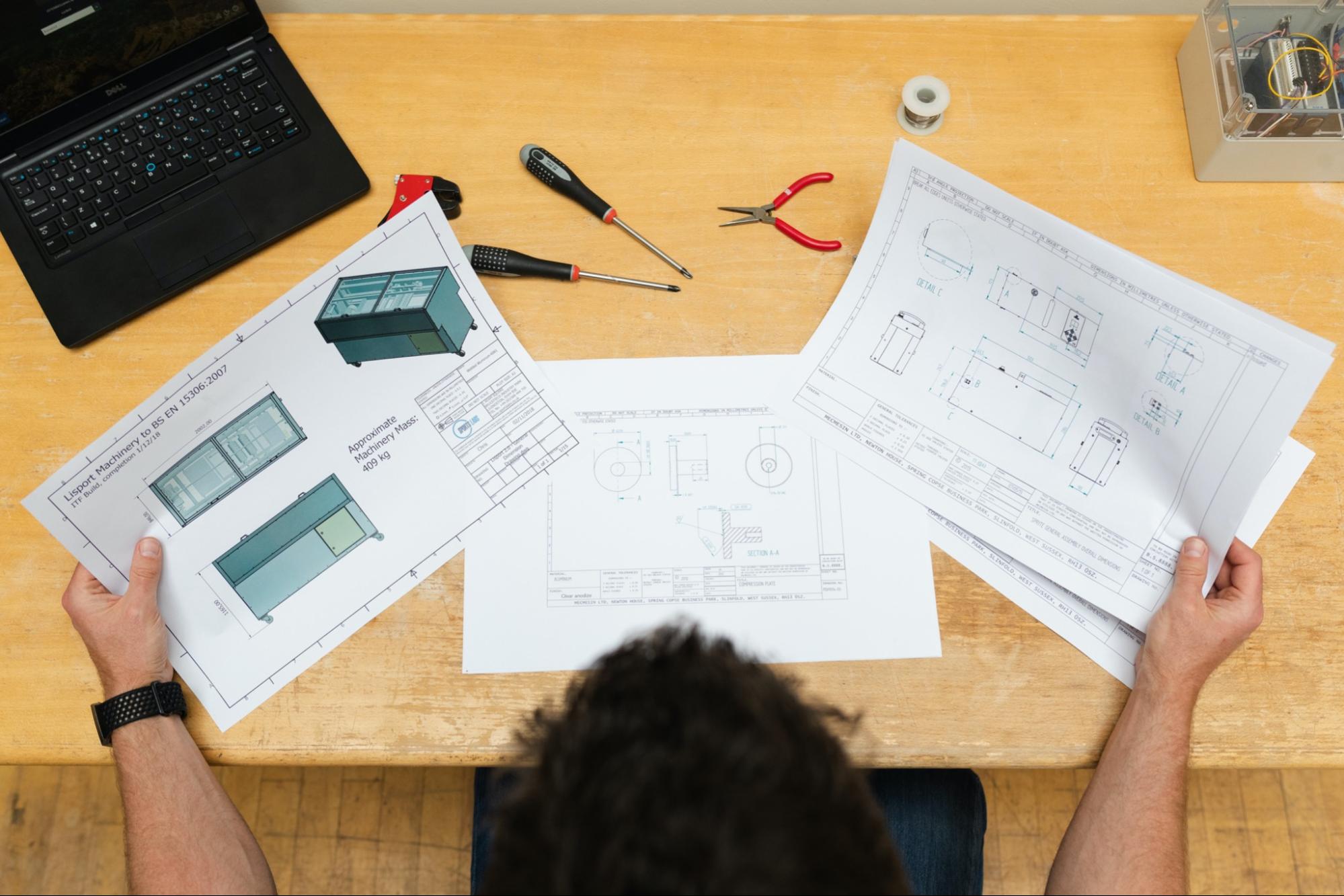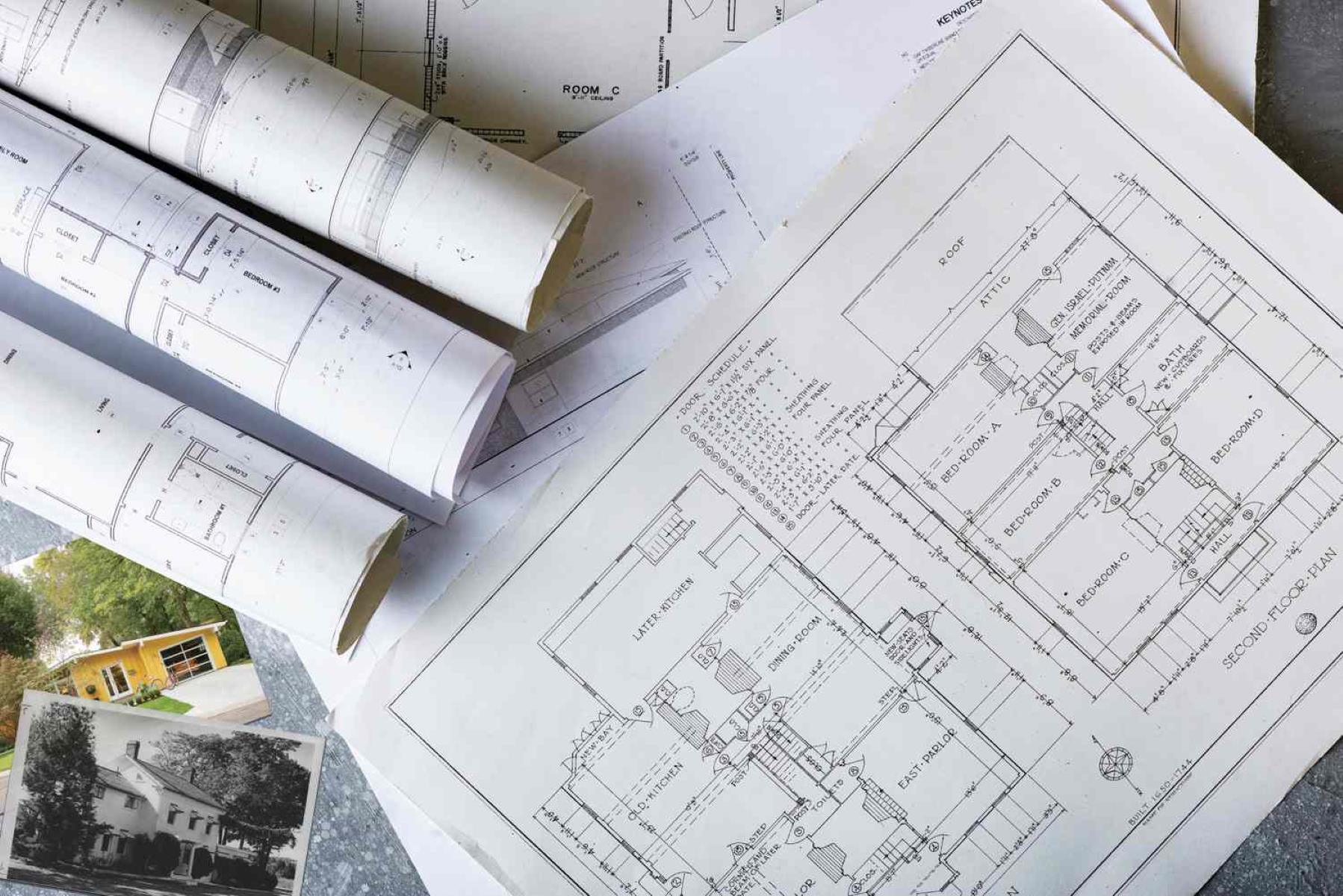Home>diy>Building & Construction>What Is IFC Drawings In Construction


Building & Construction
What Is IFC Drawings In Construction
Modified: October 21, 2024
Learn the importance of IFC drawings in building construction and how they streamline project coordination, ensuring accurate design implementation. Discover how to leverage IFC drawings for seamless construction processes.
(Many of the links in this article redirect to a specific reviewed product. Your purchase of these products through affiliate links helps to generate commission for Storables.com, at no extra cost. Learn more)
Introduction
Welcome to the world of construction, where meticulous planning and precise execution go hand in hand. In the realm of building construction, one of the most vital tools for architects, engineers, and contractors is the IFC drawings. These drawings, which stand for Industry Foundation Classes, play a crucial role in ensuring the success and efficiency of construction projects.
IFC drawings are digital representations of a building or infrastructure project that contain precise and comprehensive information about its design, structure, and components. They serve as a common language among different stakeholders involved in the construction process, allowing them to communicate and collaborate effectively.
The purpose of this article is to delve deeper into the concept of IFC drawings, exploring their definition, purpose, benefits, challenges, common applications, key components, advancements in technology, and best practices. By understanding these aspects, you will gain valuable insights into how IFC drawings can revolutionize the construction industry and elevate the quality and efficiency of building projects.
Key Takeaways:
- IFC drawings revolutionize construction by providing a standardized format for seamless collaboration, accurate representation of building elements, and efficient clash detection, ultimately enhancing project outcomes.
- Despite challenges, advancements in technology have transformed IFC drawings, enabling BIM integration, cloud-based collaboration, mobile accessibility, virtual reality, data analytics, and openBIM standards, empowering stakeholders to embrace digital workflows and improve productivity.
Read more: What Is A Shop Drawing In Construction
Definition of IFC Drawings
IFC drawings, also known as Industry Foundation Classes drawings, are digital representations of building or infrastructure projects used in the construction industry. These drawings provide a standardized format for exchanging information among different software applications and stakeholders involved in the construction process.
IFC drawings are based on the IFC schema, which is an open, neutral, and international standard for sharing and exchanging data in the building and construction industry. The IFC schema defines a set of object types, properties, and relationships that allow for accurate and consistent representation of building elements, such as walls, floors, doors, windows, and structural components.
These drawings contain detailed information about the design, construction, and operation of a building or infrastructure project. They include geometric information, such as the shape, size, and position of building elements, as well as non-geometric information, such as material properties, performance specifications, and quantities.
IFC drawings are typically created using Building Information Modeling (BIM) software, which enables architects, engineers, and contractors to develop a digital model of the project and extract relevant information for different purposes, such as visualization, analysis, and construction documentation.
Purpose of IFC Drawings in Construction
The primary purpose of IFC drawings in construction is to facilitate efficient information exchange and collaboration among different stakeholders involved in the building process. These drawings serve as a common language that allows architects, engineers, contractors, and other professionals to communicate effectively and work together seamlessly.
One of the key purposes of IFC drawings is to ensure accurate and consistent representation of building elements. By using the IFC schema as a standardized format, all parties involved can interpret and understand the drawings in the same way, reducing misunderstandings and errors during the construction phase.
IFC drawings also enable the integration of different disciplines and systems in a building project. Whether it is architectural, structural, mechanical, electrical, or plumbing systems, these drawings provide a platform for seamless coordination and integration of various components, ensuring that they fit together harmoniously.
Furthermore, IFC drawings facilitate the exchange of project information between different software applications. This interoperability allows stakeholders to work with their preferred software tools while still being able to exchange and access relevant data in a consistent and accurate manner.
Another purpose of IFC drawings is to support the analysis and simulation of building performance. By incorporating detailed information about material properties, thermal properties, and environmental conditions, these drawings enable accurate analysis of energy efficiency, structural integrity, and other performance aspects of a building project.
Lastly, IFC drawings play a crucial role in improving project coordination and reducing conflicts and clashes. Through the use of clash detection software, potential clashes between building elements can be identified and resolved before construction begins, saving time and costs during the construction phase.
In summary, the purpose of IFC drawings in construction is to facilitate information exchange, coordination, integration, analysis, and clash detection, ultimately leading to more efficient and successful building projects.
Benefits of Using IFC Drawings
The use of IFC drawings in construction offers a wide range of benefits to all stakeholders involved in the building process. From architects and engineers to contractors and facility managers, here are some of the key advantages:
- Enhanced Collaboration: IFC drawings promote effective collaboration among different disciplines and professionals by providing a standardized platform for exchanging information. This leads to better coordination, fewer errors, and increased efficiency throughout the project lifecycle.
- Improved Accuracy and Consistency: By adopting the IFC schema as a standard format, IFC drawings ensure accurate and consistent representation of building elements. This eliminates misunderstandings and discrepancies, reducing rework and improving the overall quality of construction projects.
- Streamlined Information Exchange: IFC drawings enable seamless information exchange between different software applications, allowing stakeholders to work with their preferred tools while still maintaining data integrity. This interoperability enhances productivity and efficiency in the design and construction processes.
- Enhanced Visualization: With detailed geometric and non-geometric information, IFC drawings provide a visual representation of building elements, allowing stakeholders to better understand the design intent and make informed decisions. This visualization capability aids in design review, client communication, and project approval processes.
- Efficient Clash Detection: IFC drawings support clash detection and clash resolution, identifying potential conflicts between building elements before construction begins. By detecting clashes early on, project delays and costly rework can be minimized, ensuring smoother construction progress.
- Facilitated Facility Management: IFC drawings contain comprehensive information about building components, materials, and systems. This data can be leveraged for facility management purposes, such as maintenance, repairs, and renovations, allowing for ongoing optimization and efficient operation of the constructed facility.
- Improved Project Control and Cost Management: IFC drawings enable accurate quantity takeoffs and cost estimation, facilitating better project control and cost management. By having detailed information about the materials and quantities involved, project budgeting and procurement processes can be more precise and efficient.
Overall, the use of IFC drawings in construction brings numerous benefits, including enhanced collaboration, improved accuracy and consistency, streamlined information exchange, enhanced visualization, efficient clash detection, facilitated facility management, and improved project control and cost management. By leveraging these advantages, stakeholders can achieve better project outcomes and deliver high-quality buildings and infrastructure.
Challenges in Implementing IFC Drawings
While IFC drawings offer numerous benefits, their implementation in the construction industry is not without challenges. Here are some of the key challenges faced when adopting and using IFC drawings:
- Lack of Standardization: Despite being an international standard, there may still be variations in how different software applications interpret and implement the IFC schema. This can lead to inconsistencies and interoperability issues, making it more challenging for stakeholders to exchange and work with IFC drawings seamlessly.
- Complexity and Learning Curve: The creation and management of IFC drawings require specialized knowledge and expertise. Architects, engineers, and contractors need to invest time and resources to learn and adapt to the IFC standards and processes, which may result in a steep learning curve for some professionals.
- Data Quality and Integrity: IFC drawings heavily rely on accurate and up-to-date data to be effective. However, ensuring the quality and integrity of data throughout the project lifecycle can be a challenge. Any errors or inaccuracies in the data input can propagate throughout the drawings, leading to potential issues during construction or facility management.
- Software Limitations: The availability and functionality of software applications that support IFC drawings can vary. Some software may have limitations in terms of data exchange, visualization capabilities, or clash detection. This can hinder the smooth integration and collaboration among different stakeholders using different software tools.
- Budget and Resource Constraints: Implementing IFC drawings may require investments in software licenses, hardware, training, and resources. Small and medium-sized firms may have budget constraints or lack the necessary resources to fully embrace and implement IFC drawings, limiting their benefits in the construction process.
- Resistance to Change: The adoption of new technologies and processes often faces resistance within organizations. Stakeholders who are accustomed to traditional methods of construction documentation may be reluctant to embrace the change and invest in the necessary tools and training required for working with IFC drawings.
- Standardization with Existing Projects: Integrating IFC drawings into existing construction projects can pose challenges, especially when dealing with legacy drawings and data that may not conform to the IFC schema. Converting and aligning existing project information with the IFC standard can be time-consuming and complex.
Despite these challenges, the construction industry continues to evolve and adapt to the adoption of IFC drawings. Through collaboration, continuous improvement, and addressing these challenges head-on, the industry can harness the full potential of IFC drawings for more efficient and successful construction projects.
IFC drawings in construction refer to Industry Foundation Classes, which are a standardized file format used for sharing building information models (BIM) between different software applications. This helps ensure interoperability and collaboration among project stakeholders.
Read more: What Size Are Construction Drawings
Common Applications of IFC Drawings in Construction Projects
IFC drawings find extensive use in a wide range of construction projects, providing valuable benefits and functionalities across various stages of the project lifecycle. Here are some common applications of IFC drawings:
- Design and Documentation: IFC drawings play a vital role in the design and documentation phase of a construction project. Architects and engineers use IFC drawings to create a digital representation of the building or infrastructure, incorporating detailed information about the design intent, spatial layout, and component specifications.
- Coordination and Clash Detection: IFC drawings facilitate coordination among different disciplines and systems involved in the project, such as architecture, structure, mechanical, electrical, and plumbing. By overlaying the IFC drawings from different disciplines, clashes and conflicts between building elements can be identified and resolved before construction begins.
- Quantity Takeoffs and Estimation: With detailed information about building components and materials, IFC drawings enable accurate quantity takeoffs and cost estimation. Contractors can extract data from IFC drawings to determine the quantities of materials required, aiding in project budgeting and procurement processes.
- Construction Visualization: IFC drawings provide a visual representation of the construction project, allowing stakeholders to visualize the building design, structure, and components. This visualization aids in design review, client communication, and understanding the project’s appearance and functionality before construction commences.
- Construction Planning and Scheduling: IFC drawings help in developing construction plans and schedules by providing a comprehensive understanding of the building components and their relationships. Contractors can use IFC drawings to sequence construction activities, allocate resources, and optimize construction processes.
- Facility Management: IFC drawings support effective facility management by providing detailed information about building components, materials, and systems. This data can be utilized in maintenance, repairs, and renovations, ensuring optimal performance and efficient operation of the constructed facility throughout its lifecycle.
- Building Performance Analysis: IFC drawings facilitate the analysis and simulation of building performance factors such as energy efficiency, structural integrity, and thermal performance. By incorporating detailed information about material properties and environmental conditions, stakeholders can evaluate and optimize the design for better performance outcomes.
- Project Collaboration and Communication: IFC drawings serve as a common language among different stakeholders involved in the construction process. They enable effective collaboration and communication by providing a standardized format for exchanging information and streamlining communication channels.
By leveraging these applications, IFC drawings significantly enhance the efficiency, accuracy, and coordination of construction projects, leading to improved outcomes, reduced rework, and enhanced stakeholder satisfaction.
Key Components of IFC Drawings
IFC drawings consist of various components that provide a comprehensive and detailed representation of a construction project. These components encompass both geometric and non-geometric information, ensuring a holistic understanding of the building or infrastructure. Here are the key components of IFC drawings:
- Building Elements: The building elements form the core of IFC drawings. They represent various components of the building, such as walls, floors, doors, windows, roofs, and structural elements. Each element contains information about its geometry, dimensions, and position within the project.
- Attributes: Attributes provide additional information about the building elements. They include details such as material properties, performance specifications, thermal properties, fire resistance ratings, and acoustic characteristics. Attributes play a crucial role in accurately representing the properties and behavior of the building in the virtual environment.
- Relationships: Relationships define the connections between different building elements. They establish spatial relationships, hierarchical relationships, and dependencies among the components. Relationships ensure the proper coordination and integration of various elements within the project.
- Quantities and Measurements: IFC drawings include information about the quantities and measurements of building components. This data enables accurate quantity takeoffs, cost estimation, and material procurement. Quantities can include dimensions, volumes, areas, and weights, helping stakeholders manage project budgets and resources effectively.
- Classification: Classification provides a standardized way of categorizing building elements based on their type, function, or other attributes. Classification systems such as Uniformat, MasterFormat, and OmniClass are commonly used in IFC drawings to organize and categorize components, facilitating efficient data management and retrieval.
- Coordinate System: The coordinate system defines the spatial reference for the IFC drawings. It establishes the origin, axis directions, and units of measurement, ensuring consistency and accuracy when positioning and aligning building elements within the project.
- Geometry Representation: Geometric representation refers to the graphical depiction of building elements within the IFC drawings. It includes information on shape, size, and position. Geometric representation can be 2D (plan views, elevations) or 3D (3D models, sections), providing stakeholders with a visual understanding of the project design and layout.
- Version Control: Version control ensures that IFC drawings are properly managed and updated throughout the project lifecycle. It tracks changes, revisions, and updates made to the drawings, enabling stakeholders to access the latest and most accurate information. Version control helps maintain data integrity and supports effective collaboration among project teams.
These key components work together to create a comprehensive and dynamic representation of a construction project within IFC drawings. They enable accurate visualization, effective coordination, precise quantity estimation, and seamless information exchange among stakeholders, leading to improved project outcomes.
Advancements in IFC Drawings Technology
Over the years, advancements in technology have significantly enhanced the capabilities and functionalities of IFC drawings in the construction industry. These advancements have revolutionized the way stakeholders work with IFC drawings, improving collaboration, accuracy, and efficiency. Here are some key advancements in IFC drawings technology:
- BIM Integration: Building Information Modeling (BIM) has become increasingly integrated with IFC drawings. BIM software allows stakeholders to create intelligent 3D models that contain detailed information about building elements. These models can then be exported as IFC drawings, ensuring accurate representation and seamless data exchange between different software applications.
- Cloud-Based Collaboration: Cloud-based platforms have revolutionized collaboration and information sharing in the construction industry. Stakeholders can now access and collaborate on IFC drawings in real-time, regardless of their location or the software tools they are using. This cloud-based approach facilitates efficient communication, reduces version control issues, and streamlines project coordination.
- Mobile Accessibility: With the emergence of mobile applications, stakeholders can now access and review IFC drawings on smartphones and tablets. This mobility enables on-site inspections, instant feedback, and improved communication between the field and the office. Mobile accessibility enhances efficiency, reduces delays, and facilitates quick decision-making during the construction process.
- Virtual and Augmented Reality: The integration of virtual and augmented reality technologies with IFC drawings has brought about immersive visualization experiences. Stakeholders can now visualize and interact with IFC drawings in a three-dimensional virtual environment. This technology allows for better design review, client presentations, and improved understanding of spatial relationships within the project.
- Data Analytics and AI: Advancements in data analytics and artificial intelligence have unlocked the potential of extracting actionable insights from IFC drawings. Big data analytics can be applied to the vast amount of information contained within IFC drawings, allowing stakeholders to identify patterns, optimize designs, and make data-driven decisions. AI algorithms can also assist in automating tasks such as clash detection and quantity takeoffs, saving time and improving accuracy.
- OpenBIM Standards: OpenBIM, an initiative that promotes interoperability and collaboration in the construction industry, has further advanced the capabilities of IFC drawings. OpenBIM standards ensure that different software applications adhere to a common set of protocols, allowing for seamless data exchange and collaboration between tools. This standardization enhances efficiency, reduces errors, and promotes better coordination among stakeholders.
- Laser Scanning and Reality Capture: Laser scanning and reality capture technologies have revolutionized the process of capturing as-built data and integrating it into IFC drawings. By scanning existing buildings and infrastructure, stakeholders can create accurate IFC drawings that reflect the actual conditions on the ground. This technology allows for more accurate renovations, retrofits, and facility management.
These advancements in IFC drawings technology have transformed the construction industry, empowering stakeholders to embrace digital workflows, improve collaboration, and increase productivity. As technology continues to evolve, we can expect further innovation in IFC drawings, making them even more powerful and indispensable in the construction process.
Best Practices for Creating and Managing IFC Drawings
To ensure the successful creation and management of IFC drawings in construction projects, it is essential to follow best practices that promote accuracy, consistency, and collaboration among stakeholders. Here are some key best practices to consider:
- Establish Clear Project Requirements: At the outset of the project, define clear project requirements for the creation and use of IFC drawings. This includes specifying the level of detail, required components, and overall project objectives. Establishing clear requirements will set the foundation for accurate and effective IFC drawings.
- Adhere to Standardization: It is crucial to adhere to industry-standard schemas and guidelines when creating IFC drawings. Follow recognized standards like the IFC schema and classification systems to ensure consistency and interoperability among different software applications and stakeholders.
- Implement Quality Control Measures: Establish quality control measures to maintain the accuracy and integrity of IFC drawings throughout the project. This includes conducting regular reviews, employing clash detection software, and ensuring compliance with project requirements and industry standards.
- Embrace Collaboration and Communication: Foster a collaborative environment among project stakeholders to encourage effective communication and information exchange. Regular coordination meetings, clear communication channels, and collaborative software platforms can enhance collaboration and minimize misunderstandings during the creation and use of IFC drawings.
- Invest in Training and Education: Ensure that team members involved in creating and managing IFC drawings receive adequate training and education on the software applications and processes involved. This will equip them with the necessary skills to effectively work with IFC drawings and reduce errors or inefficiencies.
- Utilize Clash Detection Software: Implement clash detection software to identify and resolve clashes and conflicts between different building elements within the IFC drawings. Regularly run clash detection tests to minimize clashes before they impact construction progress and incur additional costs.
- Employ Version Control: Establish version control processes to manage revisions, changes, and updates to IFC drawings. Maintain a central repository where all stakeholders can access and retrieve the latest versions of the IFC drawings, ensuring data integrity and preventing the use of outdated or incorrect information.
- Regularly Update and Maintain IFC Drawings: Throughout the project lifecycle, regularly update and maintain the IFC drawings to reflect the actual status of the construction. Capture and integrate as-built data to ensure accuracy and alignment with the physical progress of the project.
- Continuously Improve and Evolve: Embrace a culture of continuous improvement by learning from each project and identifying areas for enhancement. Regularly evaluate the effectiveness of the IFC drawings implementation and seek feedback from stakeholders to enhance processes and maximize the benefits of using IFC drawings.
By following these best practices, stakeholders can ensure the creation and management of accurate, consistent, and effective IFC drawings in construction projects. This will result in enhanced collaboration, improved workflow efficiency, and overall project success.
Conclusion
IFC drawings have revolutionized the construction industry, providing a standardized format for exchanging information, enhancing collaboration, and improving project outcomes. These digital representations of building and infrastructure projects enable stakeholders to communicate effectively, coordinate seamlessly, and make informed decisions throughout the project lifecycle.
Throughout this article, we explored the definition, purpose, benefits, challenges, common applications, key components, advancements in technology, and best practices related to IFC drawings. We learned that IFC drawings facilitate accurate representation, integration of different disciplines, efficient clash detection, and streamlined information exchange. They support various construction activities such as design, documentation, visualization, quantity takeoffs, scheduling, and facility management.
While there are challenges in implementing IFC drawings, including standardization, complexity, and learning curve, advancements in technology have addressed many of these issues. BIM integration, cloud-based collaboration, mobile accessibility, virtual and augmented reality, data analytics, and openBIM standards have transformed the capabilities and functionalities of IFC drawings.
To maximize the benefits of IFC drawings, it is crucial to follow best practices such as establishing clear project requirements, adhering to standardization, implementing quality control measures, fostering collaboration and communication, investing in training and education, and utilizing clash detection software. It is also important to regularly update and maintain the IFC drawings, employ version control, and continuously improve and evolve processes.
In conclusion, IFC drawings have become an indispensable tool in the construction industry, enabling stakeholders to visualize, analyze, and coordinate building projects with precision and efficiency. By embracing the power of IFC drawings, the construction industry can continue to innovate, improve collaboration, and deliver high-quality buildings and infrastructure projects.
Frequently Asked Questions about What Is IFC Drawings In Construction
Was this page helpful?
At Storables.com, we guarantee accurate and reliable information. Our content, validated by Expert Board Contributors, is crafted following stringent Editorial Policies. We're committed to providing you with well-researched, expert-backed insights for all your informational needs.














0 thoughts on “What Is IFC Drawings In Construction”